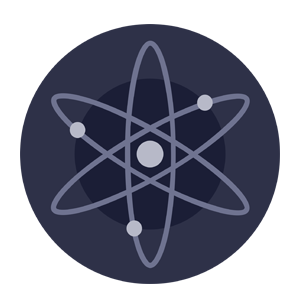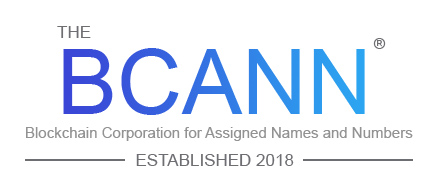
In a nutshell, Cosmos bills itself as a project that solves some of the “hardest problems” facing the blockchain industry. It aims to offer an antidote to “slow, expensive, unscalable and environmentally harmful” proof-of-work protocols, like those used by Bitcoin, by offering an ecosystem of connected blockchains.
The project’s other goals include making blockchain technology less complex and difficult for developers thanks to a modular framework that demystifies decentralized apps. Last but not least, an Interblockchain Communication protocol makes it easier for blockchain networks to communicate with each other — preventing fragmentation in the industry.
Cosmos’ origins can be dated back to 2014, when Tendermint, a core contributor to the network, was founded. In 2016, a white paper for Cosmos was published — and a token sale was held the following year. ATOM tokens are earned through a hybrid proof-of-stake algorithm, and they help to keep the Cosmos Hub, the project’s flagship blockchain, secure. This cryptocurrency also has a role in the network’s governance.
Who Are the Founders of Cosmos?
The co-founders of Tendermint — the gateway to the Cosmos ecosystem — were Jae Kwon, Zarko Milosevic and Ethan Buchman. Although Kwon is still listed as principal architect, he stepped down as CEO in 2020. He maintains he is still a part of the project but is mainly focusing on other initiatives. He has now been replaced as Tendermint’s CEO by Peng Zhong, and the whole board of directors was given quite a substantial refresh. Their goals include enhancing the experience for developers, creating an enthusiastic community for Cosmos and building educational resources so greater numbers of people are aware of what this network is capable of.
How Does Cosmos Work?
The Cosmos network consists of three layers: the application layer, the networking layer and the consensus layer.
The application layer processes transactions and updates the state of the network, while the networking layer allows communication between transactions and blockchains. The consensus layer helps nodes agree on the system's current state.
Cosmos uses a set of open-source tools to connect the various layers together and enable developers to build dApps.
Tendermint
The most essential element of this layered design is the Tendermint BFT engine, the part of the network that allows developers to build blockchains without having to code them from scratch. With Tendermint, various processes that are essential to blockchains, such as the p2p network, consensus algorithm and transaction processing, are bundled into one package. This makes it much simpler to create a blockchain application, as it removes the need to start from scratch.
Cosmos Hub and Zones
The Cosmos Hub was the first blockchain to be established on the Cosmos network. It's designed to function as a go-between for all the unique blockchains that have been formed within the Cosmos network, known as "zones." The Cosmos Hub validators are responsible for maintaining consensus across all zones, and they earn fees for doing so. The native token of the Cosmos Hub is ATOM, which is used to pay these fees.
Tendermint Byzantine Fault Tolerance (BFT)
The heart of Tendermint is Tendermint Core, a Proof-of-Stake (PoS) governance mechanism that ensures the computers running Cosmos Hub are always in sync. It uses the Tendermint Byzantine Fault Tolerance (BFT) consensus algorithm, a variant of PoS. Under this system, validators take turns committing new blocks of transactions to the chain.
Cosmos SDK
The Cosmos team has also created the Cosmos software development kit (SDK), which allows them to use Tendermint's consensus algorithm to create blockchains. The SDK is based on the modular philosophy, meaning that developers can plug in various modules to build the kind of blockchain they need. It also allows for different programming languages to be used, making it accessible to a wider range of developers.
What Makes Cosmos Unique?
A major concern for some in the crypto industry centers on the levels of fragmentation seen in blockchain networks. There are hundreds in existence, but very few of them can communicate with each other. Cosmos aims to turn this on its head by making this possible.
Cosmos is described as “Blockchain 3.0” — and as we mentioned earlier, a big goal is ensuring that its infrastructure is straightforward to use. To this end, the Cosmos software development kit focuses on modularity. This allows a network to be easily built using chunks of code that already exist. Long-term, it’s hoped that complex applications will be straightforward to construct as a result.
Scalability is another priority, meaning substantially more transactions can be processed a second than more old-fashioned blockchains like Bitcoin and Ethereum. If blockchains are to ever achieve mainstream adoption, they’ll need to be able to cope with demand as well as existing payment processing companies or websites — or be even better.
Cosmos Interchain Accounts Upgrade
The Interchain Foundation, a non-profit organization of the Cosmos ecosystem, announced the release of the Interchain Accounts upgrade on Feb. 17, 2022. Launched in April 2021, the Inter-Blockchain Communications (IBC) protocol is the Cosmos standard for blockchain interoperability. It allows an individual blockchain to control an account on a separate chain. There are 38 projects utilizing IBC currently, notably Terra, Crypto.org chain and Gravity bridge. The Interchain Accounts upgrade will be the largest to the ecosystem since Stargate — which enabled Cosmos blockchains to connect with each other using the standardized protocol for IBC for the first time ever. With Interchain Accounts, users can stake, vote, swap tokens and more on other blockchains. The upgrade serves the purpose of “enabling composability in IBC [which] allows innovation in distinct applications to be deployed without needing to upgrade the entire Interchain.”
Check out simple definitions for crypto terms in our glossary
Learn about blockchain basics with CMC Alexandria
How Many Cosmos (ATOM) Coins Are There in Circulation?
ATOM has a very specific total supply — 260,906,513 to be exact. Of these, at the time of writing, about 203,121,910 were in circulation. It is worth noting that these cryptocurrencies aren’t mined — instead, they are earned through staking.
Two private sales were held in January 2017, followed by a public sale in April of that year. This raised a total of $16 million, which is the equivalent of about $0.10 per ATOM.
Breaking down the token distribution, about 80% was allocated to investors, while the remaining 20% was split between two companies: All In Bits and the Interchain Foundation.
Cosmos has compared ATOM tokens to the ASICs that are used to mine Bitcoin. As a technical paper written by the Tendermint team explained: “It is a piece of virtualized hardware (economic capital) that you need to obtain in order to participate as a keeper in the network.”
How Is the Cosmos Network Secured?
As we mentioned earlier, Cosmos uses a proof-of-stake consensus algorithm. Validator nodes that stake a higher quantity of ATOM tokens are more likely to be chosen to verify transactions and earn rewards. Nodes that are found to be acting dishonestly are penalized — and they can end up losing the tokens that they had at stake.


